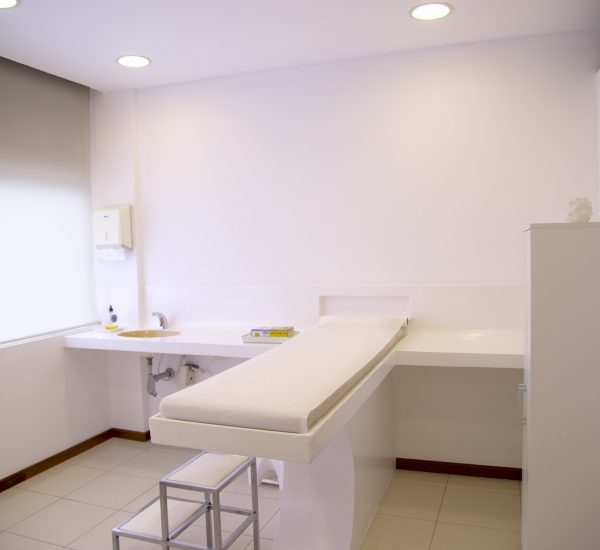In the 21st century, physicians are consistently working in a group setting of health care professionals, who through collaboration provide care and treatment to their patients.
In these teams comprised of nurses, technicians and other health allied professionals; the primary role of doctors are to coordinate and guide team members in ensuring high quality of care and promote the well-being of patients.
As many physicians can attest, autonomy is essential to their quality of work.
Unfortunately, many physicians are reporting burn outs and lack of satisfaction with their work due to stress imposed by their work setting.
Physicians usually work for hospitals, clinics, and even for themselves in private practices. Interestingly, many physicians working for large organizations such as hospitals and franchise clinics report being burden by the organization’s bureaucracy and lacking in autonomy in their practice.
In a survey conducted by the research division of PR Newswire; it found that the number one cause of physician dissatisfaction with their profession being “decreasing autonomy” with 46% of respondent backing the position.

Therefore, it’s no surprise many of the medical practitioners in the industry working for large organizations prefer starting and managing their own private clinics.
Unfortunately, the current common belief in the physician community is managing and owning a private office tends to be a hassle and not a worthwhile venture.
This specific perspective is not far from the industry trend; according to the American Medical Association (AMA), in 2016 where 47.1% of physicians had ownership of their practice in comparison to the year 1983 where 76.1% of doctors were practice owners.
The discrepancy is totally obvious, and many experts are investigating how over 30 years the majority of physician population transitioned from employer to employee status.
Well the answer is simply no single variable is solely responsible.
Rather factors like the cost of starting an office, licensing, insurance, increase in regulations, and investment of large amount of time and energy that discourages doctors from starting such enterprise endeavors.
Now, the important question is, “owning a private practice, is it only limited to a selected few?” The answer of course is a resounding NO!
But, in reality it has become more difficult for physicians to start and operate private medical practices now versus the 1980’s in the United States.
The primary goal of this article is not to discourage physicians from starting their private practices, instead provide them the roadmap to owning their own business and practice medicine in full autonomy.

Specifically doing so, by providing business savvy doctors a detail oriented business plan based off of data, experts’ opinion, and well researched content.
In addition, we want to inform our enthusiastic readers of the challenges and factors associated in such a worthwhile undertaking.
How to Start a Private Practice as a Physician
As always, we strongly recommend our readers to conduct more research and indisputably meet with well experienced consultants before executing their business plans. Now let’s begin discussing the steps.
1. Pro Forma
The first step to starting any business is of course always accompanied with making a realistic yet conservative business plan.
To be frank, business plans are primarily used for financing and getting the needed capital to fund the venture.
Yet, if done with enough scrutiny and research it can also serves as a timetable for how the business should progress within the first few years.
In cases of medical offices or clinic ventures, physicians need to formulate a Pro Forma, which is the simpler version of a business plan.
Pro Forma incorporates the enterprise’s expenditures ranging from equipment expenses to operation costs and includes both debt projection and profitability based of realistic models.
2. Financing
Financing is one of the main methods utilized by business enthusiasts to gain access to the needed capital to start their dreams and ambitions.
But for almost all doctors fresh out of residency or few years into professional practice who are eager to start their own private practice, the route of financing through the traditional bank is nonetheless the only way.
Because most doctors as they exit medical school and finish residency have not settled their educational loans and debt, which have accumulated tremendous amount of interest as well.

Consequently, doctors tend to have negative net worth at the start of their career and no initial saving to embark on the entrepreneurial ambitions.
Therefore, a strong and accurate Pro Forma is the key for physicians to receive funding even with their negative net worth status.
When a doctor applies for a loan through the bank they are automatically evaluated with a higher scrutiny as the issue of their previous loans and repayment status come into the risk assessment equation for the new needed capital.
If the medical provider can provide accurate and firm plan on how their business will operate and provide realistic but promising profit margins the bank will be able to lend the needed money.
Depending on the state and location doctorly.org reports a small practice can range from $70,000 to more than $100,000 for the first couple months.
As a result, a conservative and smart estimate would be $200,000 for the first couple years to account for unforeseen circumstances and complications.
Making the case Pro Forma and financing must be done right for the launch of a medical practice.
3. Putting Pro Forma into action
After receiving the capital, the medical provider needs to start putting his Pro Forma into action meaning, laying out the infrastructure, purchasing the necessary equipment and staffing the office with professional trained individuals.
4. Infrastructure
In any business requiring a physical location, the site of the establishment plays a critical role in the success of the venture.
Although, physicians in general are needed everywhere and they can set up shop anywhere as people always get sick and need a doctor, a location can make or break the profitability of a small medical practice.
For example, pediatric physicians are best served if stationed near multiple preliminary and elementary schools as kids end up getting sick mid-day going home early or completely absent.
As a result, parents tend to choose the more convenient physician nearby to diagnose and treat the children corresponding to a possible supply of patients.
The distance of a doctor’s office has a critical role in the survival of the private practice.

Therefore physicians utilizing analytical services to be given data on which area or cities to establish their practice can be a game changer as they can target specific age population that their care is geared towards.
The next important issue in the infrastructure discussion of a business is the facility itself.
Every business requires certain architectural elements unique to the type of business, for example restaurants needing a kitchen, clothing stores requiring changing rooms, and medical offices having the need of patient diagnosing rooms.
Physician offices usually have spacious waiting rooms with a front desk for nursing and secretary staff and multiple diagnosing rooms to admit the patients.
Its common practice for physicians to rent out offices in business or even medical complexes as one starting office needs to stay away from any construction or unnecessary building costs.
Still it’s important for a doctor to keep its prestige by renting a medical office in a well looking complex rather than a shabby one, as it can impact the supply of patients.
Still, even small details in the physical office can hurt or improve the experience of patients and our goal is always to improve patient satisfaction which directly correlates to the medical practice’s success.
5. Equipment
Doctor offices tend to have a variety of equipment to diagnose patients or treat depending on the health circumstances of the individual.
It is important to know many of the tools used are disposable and need to be bought in bulk, as a result it’s essential for physicians to secure distributors for such products as it can serve to save cost and be in supply of the needed items.
In case of each medical specialty the items are different.

But common items doctor needs to make sure their business have includes a reputable Electronic Health Record System, up to standard medical billing service, updated medical transaction software, and credit card processor.
The listed items are key, essential and commonly used in every medical related business setting to ensure privacy of patient’s health information as well as a smooth process of transaction between the customer and business.
The most important equipment in the medical business today includes: keeping patients records safe but accessible to other health care providers through standard Electronic health record system.
The process of getting paid as a medical provider is extremely complicated as each patient come with various medical insurance and methods of payment, and medical offices need to have in place flexible systems of getting compensated by people in various circumstances.
6. Staffing
In an enterprise having a staff comprised of professional individual is practically the strongest indicator of making a business a success or failure.
As anyone knows one person cannot accomplish everything on their own as a result; it requires a team of motivated individuals to get business up and running.
Throughout the article the main theme has been a medical office operates as a normal business, consequently staffing process is key.

Therefore, it is essential to pick the right individuals with the right background for a medical practice.
In almost all medical related business most of the staff are needed to be certified in their respective roles or have some type of education level before being considered for position not to mention exhibiting the right character.
Luckily, the process can be made easier for physicians through utilizing agencies that can refer individuals with the appropriate qualification for each medical role making the hiring a lot easier.
Still, doctors as employers must conduct their own background checks to evaluate and check individuals’ history and qualification to ensure safety and privacy of their patients.
7. Opening the business
This step may sound easy after fulfilling the previous intensive and time consuming tasks but its more energy intensive and time consuming of all.
Since a physician must take the appropriate and cautionary steps in doing each step correctly.
The first step is establishing the medical practice as a legal entity and obtaining a tax ID, since you are practically opening a business in the general sense and requires it to be legally documented and treated as a business.
This helps by implementing limited liability, basically if sued or put in a legal situation only assets held by the practice are subject to any possible risks associated.
In addition, there are advantages to registering the business as it provides the associated tax benefits for the enterprise.
The second major thing before opening is to make sure as a physician one’s practice has up to standard procedures and policies that is in compliance of insurance the physician will be covering (note: physician before the start of business usually should put aside 180 days aside to become credentialed with specific insurance providers).
General procedures at the medical practice should include daily routines ranging from billing, patient data entry, and documented patient interaction.

Also, since insurance providers consistently update their requirement, medical offices need to consistently be up to date with recent policies alteration and implement the same changes into their own procedures to remain effective.
The third major notion physician will have to keep into account and it’s important in the medical industry especially. It is malpractice insurance and general liability insurance.
Having a business requires variety of liability coverage for the business workers and possible legal action taken by the customer.
In the case of medical offices malpractice is especially needed as its standard to cover any false medical practices conducted by the practitioner.
It is important for the physician to choose appropriate insurance that covers multitude of possible mal practices to stay on the safe side and avoid unnecessary legal costs.
Final Remarks
Private Medical practice is a complex yet rewarding business venture that physician can take upon to garner more autonomy in their medical practice and treat patient in their own liking.
It is important to note again, the information provided in this article was a brief overview of the business process that requires interested individuals to conduct more research and gather up to date content in respect to their state of residency.
As Always we highly promote the discussion of opening a medical practice with highly specialized consultant as it’s the smart thing to do.


